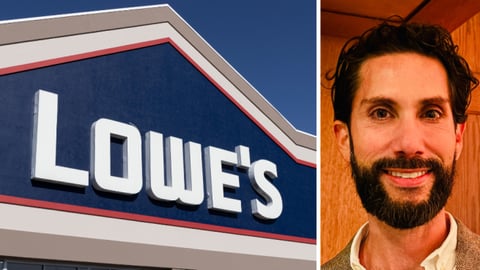Modernizing Your CPG Marketing Data Strategy
Candy maker Ferrara is experiencing the sweet smell of success with a central data platform that enables the company to engage more directly with consumers of its Trolli brand.
Trolli has a strong affinity with gamers, and the company sought to deliver more efficient and effective communications. Doing so meant “we needed to centralize our consumer data” around programs including giveaways and sweepstakes, Dan Bartelsen, IT director at Ferrara, tells CGT.
Since implementing SAP’s customer data platform, the Trolli brand team can now look at open and click-through rates to help them take “a very strategic approach to what we are sending to our consumers,’’ Bartelsen says.
Consumer Goods Sales & Marketing Summit
Get into more data-powered innovation at CGT's upcoming Sales & Marketing Summit. Happening September 23-24 in Princeton, NJ, leading CPG brands like Conair, PepsiCo, Kenvue, Church & Dwight, Kellanova, Kraft Heinz, Colgate-Palmolive, Coca-Cola, and more will take attendees through their winning approaches, challenges they encountered, and pathways to success for those looking to implement similar strategies.
It’s no secret consumers are fickle, so manufacturers must up their game when it comes to CPG marketing data strategies. This poses a challenge, though, for that very reason — consumer preferences, and digital technologies, are constantly changing. Further exacerbating the situation is when a CPG hasn’t fostered a data-driven culture or addressed data resistance.
In overcoming these challenges, there are a few straightforward steps CPGs should take to figure out where data can add the most value — whether it’s improving customer insights, optimizing supply chains, or refining product offerings.
Defining the Right Data Strategy
Leaders must first align data strategies with business outcomes, including their desired results. “Once you've nailed down these goals, figure out what data and insights you need to make them happen,’’ says Pete Reilly, co-founder and COO at AnswerRocket.
He advises CPGs not to try to tackle everything at once. “Start with a crucial, attainable business outcome. This isn't about boiling the ocean; it's about making steady, strategic progress,’’ Reilly says. “This way, you avoid analysis paralysis and create a scalable, sustainable data strategy that drives real business value.”
One of the pitfalls when developing a data strategy is either trying to do too much or too little, by focusing on a single use case, agrees Sunny Neely, global product marketing director of consumer products at SAP.
Read more: Retail media is an increasingly popular option for consumer goods companies looking to tap into valuable consumer data. Learn about Unilever's early partnership with the Sam's Club mobile checkout program.
“It’s important to think about your starting point,’’ Neely says, adding that “most consumer products companies are first-party data poor,” because they do not have the level of data that companies like Walmart or social media platforms have.
While CPGs must build up their first-party data, which can be done with a centralized CDP, that’s not all it takes to have a solid data strategy, Neely stresses. The overall goal is “tighter, more personalized communication with consumers.”
A data strategy should not only include the data that a CPG creates but also the ecosystem of data needed to operate efficiently, according to Prabhath Nanisetty, global head of retail data and technology at Snowflake.
“The key to real-time analysis and optimization is a comprehensive platform that centralizes all marketing data,” Nanisetty agrees. “This will allow [CPGs] to gain deeper insights into customer behavior, refine their targeting and segmentation, and optimize their marketing spend.”
Using AI tools that can help bridge the gap between creative development, customer insights, and marketing execution can also help CPGs respond faster to this changing landscape, he adds.
Measuring the Success of Your Data Journey
Success is all about what your data does for you, notes Reilly. It includes determining whether your teams are making better decisions with the data and if the organization is gaining meaningful insights that help you optimize business performance.
“Measure what's working and what's not,’’ he says. “Regularly assess these metrics to get a realistic view of your data journey and identify areas for improvement.”
Ultimately, your data journey is successful if it's driving tangible business results, Reilly says. “Keep an eye on whether your data helps support your target business outcomes. If it’s not adding value, it’s time to recalibrate.”
Modernizing and unifying a data environment are critical, stresses Nanisetty. Some of the metrics that should be measured are improved operational efficiency, enhanced customer satisfaction, increased sales from personalized marketing, and reduced costs through optimized inventory and supply chain management, he says.
Read more: Digital twin technology is being used across the industry to put data into action, testing out scenarios in a virtual setting to expedite time-to-market. See how Coca-Cola is using the technology to scale its generative AI marketing efforts.
Tracking these metrics in real-time across the entire organization and providing a holistic view of performance is critical, he says. Nanisetty said they’ve worked with Kimberly-Clark to advance their data maturity by tackling data silos, enhancing analytics capabilities, and improving governance — ultimately reducing time to value by 70%.
CPGs should also build a contactable consumer database and maintain that database with the right kinds of data, according to Neely.
That was top of mind for Ferrara. Before the platform implementation, there was no centralized system or database of customer information. “Quite frankly, we were working from a fragmented process,’’ says Bartelsen.
Engagement has proven to be much better than the team initially anticipated, he says. For Trolli gaming, officials see a CTR of 3% where the industry standard is on average 1.8%. Additionally, Trolli averages more than a 25% open rate, while the food and beverage industry average is 14.8%.
“Our communications with the Trolli gaming consumer are authentic and purposeful,’’ Bartelsen says. “We do not want to inundate them with communications and offerings that we know they won’t be interested in based on consumer insights and what we know about the gaming audience.”
With Trolli now yielding tantalizing results, Ferrara officials are “looking at how to optimize this platform for other brands across the company portfolio, leveraging the same authentic, purposeful communications with consumers,’’ Bartelsen says.
Addressing Data Resistance and Fostering Data-Driven Cultures
However, not everyone will embrace a new or revamped marketing data strategy. One of the keys to addressing this is understanding different stakeholder perspectives, Neely says.
“Pay specific attention to places where you know there are going to be issues,’’ he says, the “granddaddy” of which is the relationship between the CFO and CMO. “Only 20% of CMO-CFO relationships are considered healthy,” Neely says. While getting those two stakeholders on board with a marketing data strategy is critical, it’s also highly important to involve sales and marketing leaders, he says.
“The more valuable, the richer the data that marketing and sales can bring to that meeting means the more accurate the input [sales and marketing leaders] can give in terms of demand planning to the supply chain organization,” Neely says.
“Overcoming data resistance is really about shifting the company culture to see data as a strategic asset,’’ says Nanisetty. “It starts with leadership advocating for the benefits of data-driven decision-making and making sure that everyone has the platform, training, and tools they need to be successful.”
In some cases, it also means that teaching data leaders to move beyond pushback and barriers requires closer collaboration with business and technical leaders, he adds. His customer Kraft Heinz works closely with business leads to optimize processes and validate new algorithms, such as those for managing safety stocks, Nanisetty says.
“This effort also extends beyond technology, as they invest in employee skills and build a data-centric culture. They actively recruit data experts and have implemented company-wide learning programs to reinforce a data-first mindset across the organization,” he says.
To foster a data-driven culture, many companies are now bringing in chief data officers — a role that was almost nonexistent 10 years ago, he notes. While this makes sense, Neely cautions that “you have to be careful not to introduce new problems” by having the CDO own the data. “It’s important to stress shared responsibility and the mutual benefits that the data is going to create in all the different functional areas,’’ he says.
Another way CPGs can avoid data resistance is by showing their team the wins, says Reilly.
“Celebrate your data champions and early adopters to build momentum and shift the culture,’’ he says. “Start with the quick, early wins, and continue a steady drumbeat of success stories. When teams see the direct impact — better decisions, improved performance — they’ll start to buy in.”
Consumers Will Always Keep You on Your Toes
While there has long been the assumption that consumers want a personalized experience, this should not become the main focus of a marketing data strategy, Neely maintains.
“That’s where you look further into the data your company has” beyond that single use case, starting with financial data and the total cost of launching fragmented campaigns, he says. While the hyper-personalized approach may be best, you won’t know that until you understand what it costs to provide those campaigns.
“Consumer behavior has a level of randomness that can almost never be planned for,” Nanisetty agrees. In addition to ensuring that CPGs are measuring the right things and looking to get the best data, they need to have strong decision-making systems based on a single source of truth data so they can react quickly to new market conditions, he says.
“For example, connecting marketing spending and activity data with demand forecasting using a more modern data-driven S&OP process can ensure that supply issues are managed collaboratively with marketing decisions.”
In the final analysis, CPGs must always think about what’s going on with consumers because the one constant is that their wants and needs will change, and this has a direct correlation to what’s going on with the economy.
“They’re changing along certain pendulums. … They’re never going to get to a steady state,’’ says Neely.










